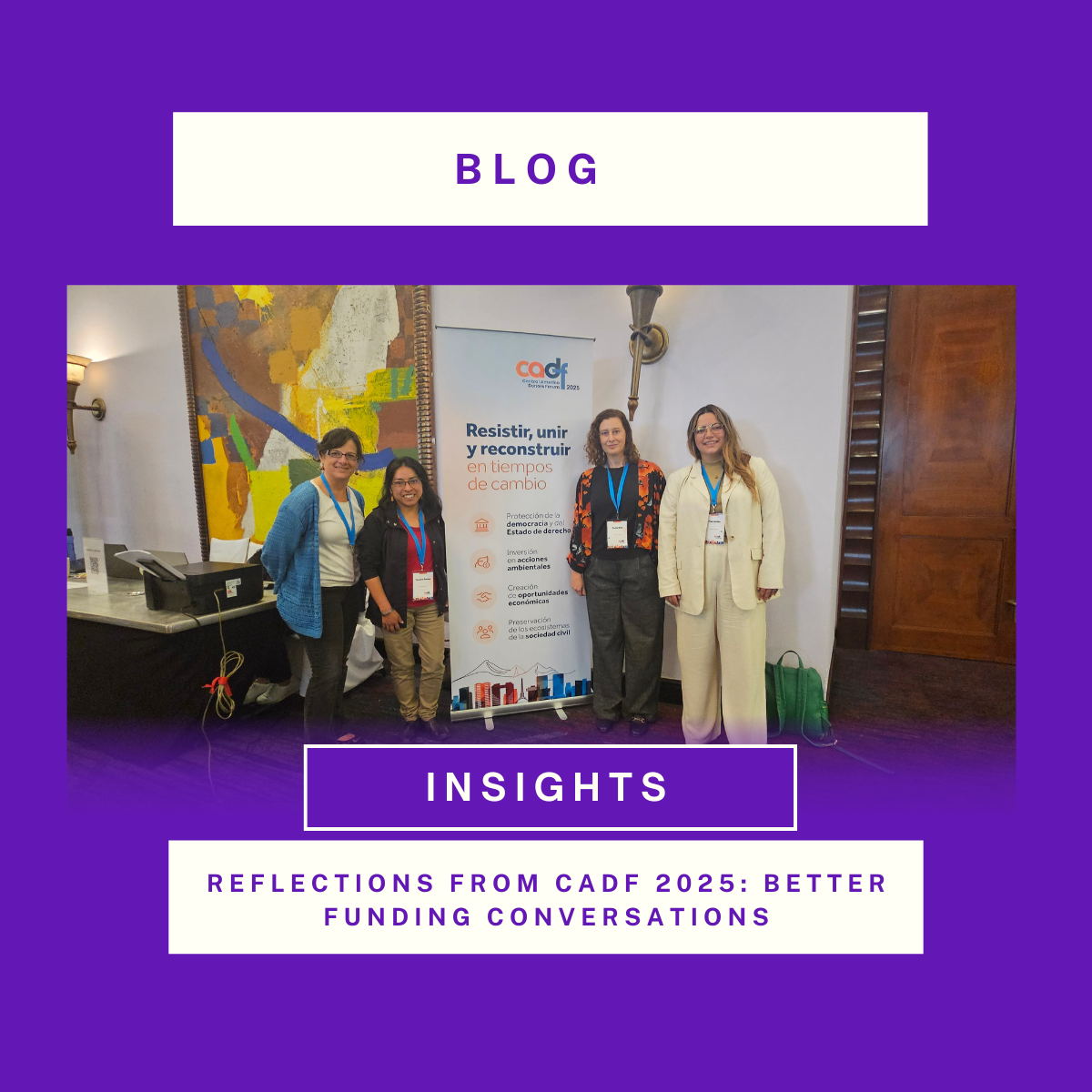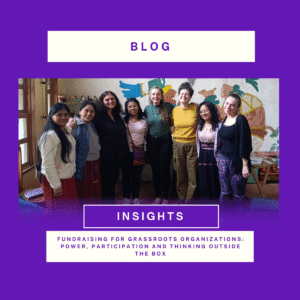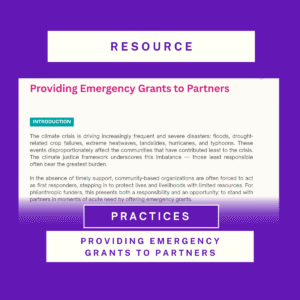Reflections from CADF 2025: Better Funding conversations
A couple of weeks ago, we attended the Central America Donors Forum (CADF 2025) in Guatemala City. As a multi-regional team (Mae who is based in Guatemala and Emily who traveled from London to participate), we cherish the moments when we find ourselves in the same geography. These moments become fertile ground for deep thinking, strategy-shaping, and reflection – not only on our work at Better Funding, but on the broader funding ecosystem we’re a part of.
Surrounded by collaborators from across the region, CADF sparked rich conversations about what it takes to resource collective change in Central America. Focusing on one region – especially one as vibrant, complex, and often misunderstood as this one – allowed us to tune into the specificity of its movements. With themes spanning climate justice, migration, and democratic resilience, this year’s forum provided a timely space to explore how philanthropy shows up (or doesn’t) in the face of compounding crises and grassroots innovation. We left with new insights, renewed energy, and a lot to reflect on.
What energized us
CADF continues to be one of the few regional spaces that intentionally brings together diverse actors – civil society leaders, philanthropic institutions, multilateral agencies, corporate representatives, and governments – to engage in dialogue and collaboration around Central America’s most urgent challenges. This year’s focus on climate, migration, and democracy felt timely and necessary, especially in the context of mounting authoritarianism, extractivism, and displacement across the region.
We reconnected with long-time colleagues and partners and were glad to see many community-led voices represented throughout the forum. From conversations about feminist leadership in political transitions to discussions on climate finance, extractivism, and the risks faced by land defenders, the sessions offered a panoramic view of the intersecting crises and the actors working toward systemic change.
We were particularly energized by moments that invited a shift in narrative and practice: sessions on localization, inclusive economies, and the decolonization of development frameworks shed light on how power circulates in policy, politics, and the mechanisms of cooperation and funding itself.
As a team committed to resourcing work in ways that are relational and equity-based, it was encouraging to hear others naming the limitations of traditional philanthropy and calling for approaches that center those most impacted. These conversations reminded us that while change is slow, the ecosystem of actors imagining and practicing new ways of showing up is growing and gaining clarity.
What we wish had been different
We believe that it’s crucial to have more spaces where collective learning and challenging conversations can coexist and where listening leads to action. CADF 2025 brought together an impressive and diverse range of actors, and the convening itself is no small feat. But several grassroots leaders we spoke with shared that despite being present, they found few real opportunities to engage directly with funders.
Many noted that funders often seemed to move in tight clusters, attending closed-door meetings or remaining in their own networks. While panels and plenaries offered valuable perspectives, they didn’t always create space for relationship-building, dialogue, or the kind of one-on-one conversations that can spark trust and collaboration. It left some civil society actors feeling that while they were visible, they weren’t always in the conversation.
This dynamic raises important questions: What might it look like to design intentional encounters across power lines: not just representation on stage, but mechanisms for exchange, feedback, and co-creation? How can we shift from parallel presence to mutual engagement?
Another area for growth is accessibility, especially financial. Several community-led groups we work with weren’t able to attend due to cost barriers, including registration fees and travel expenses. In future editions, we hope to see more dedicated resources to support the participation of those most impacted by the issues being discussed. We also met incredible leaders who were able to attend thanks to being invited and sponsored by one of their funding partners. We’ve done this before in our own roles as funders, and continue to believe it’s a powerful example of how funders can offer support beyond grants – by opening doors, using influence, and ensuring that frontline actors are present not just to participate, but to shape the conversation.
With a packed schedule of formal sessions across the two days, many participants took the initiative to organize independent conversations in smaller groups throughout the forum. We co-hosted one of these gatherings (which we’ll share more about later!). These allowed people to meet in less formal and more intimate groups which perhaps help to nurture the relationships and trust that this work requires.
Our Contribution
In true Better Funding spirit, we planned an independent session during CADF in advance of the conference, because creating space for grounded, cross-actor dialogue is an important part of our practice. We co-hosted this session alongside Mary Fifield from the Marigold Fund and Yessica Pastor from EntreMundos. The session focused on a timely question: how can funders and communities respond to climate crisis emergencies in ways that are equitable, locally led, and rooted in trust, not just urgency?
Recognizing that funds are slow to reach community-based organizations during disasters, we gathered a small but powerful group of grassroots leaders, funders, and intermediaries to explore the possibilities of creating community-managed emergency funds and improving access to rapid response resources before disasters strike. Participants shared practical examples: from pre-positioned resources in local communities to models of co-investment that recognize communities as leaders and decision-makers, not aid recipients.
We reflected on how current funding systems often fail communities in moments of crisis: mechanisms are slow, disconnected, and overly bureaucratic. Yet we also heard stories of communities organizing, responding, and protecting one another long before institutional support arrives. We also heard examples of organizations successfully pivoting existing structures like ongoing programs, fin-tech tools or regional alliances to respond quickly and effectively in emergencies. These examples showcase intermediaries and funders are already doing things differently: building relationships before crisis hits, trusting local actors, and designing systems that can adapt. It’s happening and it’s working. The question now is how to scale up and sustain these approaches across the sector.
We also invited funders to consider how moments of climate emergency can be opportunities to deepen trust-based practice. What if emergency funds weren’t separate from long-term strategies, but a reflection of them? What if disaster response was not about charity, but about co-investing in resilience, self-determination, and justice?
Throughout the forum, in our conversations with many different individuals and organizations, we brought Better Funding’s perspective into the room: that how resources flow matters just as much as where they go. We shared our learning around funding as a relationship where transparency, reciprocity and sustainability are at the center. We challenged the notion that funders must always lead, and instead lifted up models of accompaniment, community governance, and ecosystem thinking. These contributions sparked curiosity and resonance across different actors, and we heard clearly from funders and grassroots leaders alike that Better Funding is filling a real gap. Funders told us they need support turning values into practice. Leaders shared that they’re craving more spaces where their voices don’t just inform the agenda but shape the sector itself.
What we’re taking with us
We left CADF with hope, we saw sparks of transformation everywhere: funders asking deeper questions, communities holding the mic, allies naming power imbalances out loud. We’re reminded that the work of changing how funding flows in Central America is complex and collective. No single forum can do it all, but every gathering is an opportunity to practice better ways of collaborating.
The conversations we joined confirmed what we’ve felt for a long time: that philanthropy must transform. Communities are organizing, resisting, and creating alternatives every day. What’s often missing is not solutions, but the resources and the relationships to sustain them. We heard this clearly throughout the forum: many funders are looking for ways to align their practices with their values and grassroots leaders want more visibility and influence.
What we’re taking with us is the clarity that Better Funding has a role to play in this shift: as connectors, conveners, and contributors to reimagining how funding flows. For this, we’re building a community of practice, a safe space to experiment, reflect, and reimagine together.
If you joined us at CADF or are curious about our work, we’d love to stay in touch!




